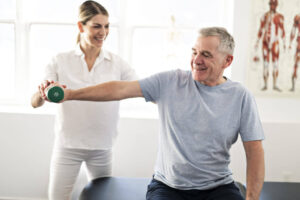 Maintaining muscle and bone mass is crucial for overall health and mobility, especially as we age. Let’s delve into effective strategies to prevent the loss of muscle and bone density in the elderly.
Maintaining muscle and bone mass is crucial for overall health and mobility, especially as we age. Let’s delve into effective strategies to prevent the loss of muscle and bone density in the elderly.
What is Muscle and Bone Mass?
Muscle and bone mass refer to the amount of muscle tissue and bone density present in the body. These components are vital for strength, mobility, and structural support.
Symptoms and Causes
Loss of muscle and bone mass in the elderly can lead to weakness, frailty, and an increased risk of fractures. Common causes include aging, hormonal changes, lack of physical activity, poor nutrition, and certain medical conditions.
Diagnosis of Loss of Muscle and Bone Mass
Diagnosing muscle and bone mass loss typically involves a physical examination, medical history review, and imaging tests like DEXA scans to measure bone density.
How to Measure Muscle Mass and Bone Mass Loss
DEXA scans are commonly used to assess bone density, while bioelectrical impedance analysis (BIA) can estimate muscle mass. These tests provide valuable insights into changes in muscle and bone health over time.
Improving Your Diet to Maintain Your Muscle Mass
A balanced diet rich in protein, calcium, vitamin D, and other essential nutrients is essential for preserving muscle and bone health. Incorporate lean proteins, dairy products, leafy greens, and fortified foods into your meals.
How to Prevent Loss of Muscle and Bone Mass in the Elderly
Engage in regular weight-bearing exercises, resistance training, and balance exercises to strengthen muscles and bones. Prioritize weight-bearing activities like walking, jogging, dancing, and strength training to maintain bone density and muscle strength.
Preserving muscle and bone mass is vital for healthy aging and maintaining quality of life. By adopting a balanced diet, staying physically active, and seeking medical guidance when needed, older adults can minimize the risk of muscle and bone mass loss, promoting overall well-being and longevity.
